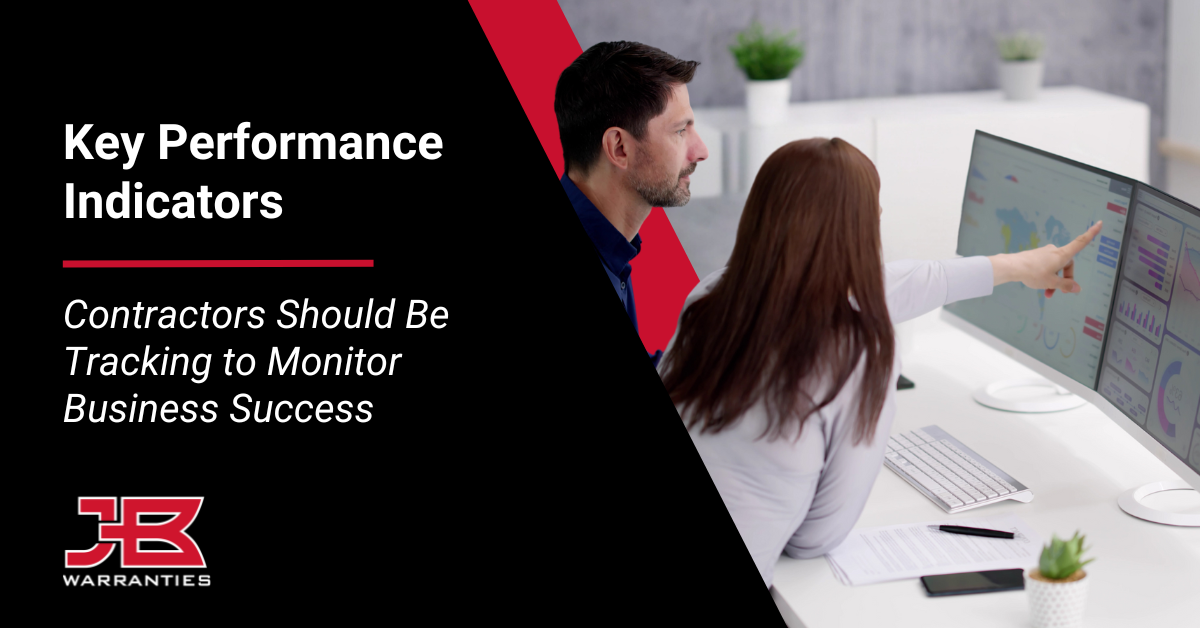
When you own and operate an HVAC or plumbing company, it’s essential to keep an eye on the health of your business month-over-month. While this may be easier said than done, there are numerous key performance indicators — better known by the acronym KPIs — that enable contractors to monitor everything from customer satisfaction to the average time for repairs.
In particular, there are five key performance indicators for service providers that help gauge the customer experience, calculate technician productivity, and track overall business success. In today’s post, the team at JB Warranties will break down the basics of key performance indicators for service providers, complete with the common formulas for calculating KPIs in the trades.
What Are Key Performance Indicators and Why Are They Important?
As the name might suggest, key performance indicators or KPIs are a collection of values that can be measured to understand a business’s overall health and assess multiple facets of its performance. HVAC and plumbing operators use insights driven by KPIs to keep a finger on the pulse of essential operational components, including customer satisfaction, technician productivity, and sales success.
No matter the size and success of a trade business, failing to keep an eye on the many key performance indicators for service providers can bring about quite a few negative consequences. A lack of KPI insights will ultimately restrict a service business from identifying hidden operational or financial concerns, setting long-term goals, and locating potential improvement opportunities.
Luckily, in today’s era of business management software and online networks, contractors can easily access KPI data with the click of a few buttons. While it’s up to you and your team to properly maintain this data long-term, chances are, you’ll discover there’s plenty more to this wealth of information than meets the eye—and even more to gain by understanding how to put it to use.
Top 5 Key Performance Indicators for Service Providers
 If you’re not marketing savvy, rest assured there are far more KPIs than the metrics that exist in search networks like Google Analytics or social media platforms Meta. Rather, as a trade-based business, your performance-driven insights will be sourced from your internal workflows, like customer satisfaction surveys, field service management tools, and general bookkeeping practices.
If you’re not marketing savvy, rest assured there are far more KPIs than the metrics that exist in search networks like Google Analytics or social media platforms Meta. Rather, as a trade-based business, your performance-driven insights will be sourced from your internal workflows, like customer satisfaction surveys, field service management tools, and general bookkeeping practices.
Here are five key performance indicators for service providers that every contractor should monitor.
1. Customer Satisfaction Score
Customer satisfaction ratings can make or break service-based businesses, which are heavily reliant on the customer experience. A customer satisfaction score (CSAT) is a helpful KPI that measures a business’s overall satisfaction rating simply by using data pulled from the day-to-day satisfaction surveys issued to customers. To calculate your company’s CSAT score, use this formula:
- CSAT (%) = (Number of positive responses ÷ Number of total responses) x 100
Beyond internal surveys, it’s also wise to collect customer satisfaction scores from third-party review sites, including Google, Yelp, and Angie, for a more accurate percentage. Customer review management software, such as Birdeye and ReviewTrackers, can help automate the data-pulling process and help service providers manage their reputation in support of more satisfied customers.
2. Customer Retention Rate
Customer retention rate (CRR) is another critical KPI that helps service-based businesses gauge their ability to maintain a strong customer base over time through overall customer loyalty. In a business as heavily reliant on returning customers and referrals as HVAC and plumbing, contractors should continuously calculate CRR to determine if there are potential issues limiting long-term retention.
Using a set period, such as one month or one year, you can calculate the customer retention rate using this formula:
- CRR % = [(E-N)÷S] x 100
E: Total number of customers at the end of the period
N: Total number of new customers gained within the given period
S: Total number of customers at the start of the period
With the infrequent customer nature of service businesses, it may be wise to calculate CRR on an annual basis rather than monthly or quarterly. A CRR in the range of 30% or higher is ideal for most home service-based service providers. Rates below 30% may still be considered healthy depending on average customer needs but could also signal possible customer satisfaction issues.
3. Technician Utilization Rate
Technician utilization helps contractors determine the average percentage of hours their employees spend handling customer service requests. The technician utilization rate helps business owners and managers assess efficiency amongst employees by determining how their on-site job resolution times compare to time not spent addressing tickets. Using employee data from your field service management software, you can calculate technician utilization rate with this formula:
Technician Utilization Rate = (Time spent handling work orders) ÷ (Number of total work hours)
In the highly competitive field of HVAC and plumbing, tracking technician utilization rate simplifies daily scheduling by helping identify stronger employees who can take on larger workloads yet still maintain adequate response times. Likewise, identifying a longer than average resolution time can signal the need for further training to boost team-wide productivity and support client satisfaction.
4. Sales Revenue
Sales revenue is one of the top financial key performance indicators for service providers. It indicates how much money is coming into an HVAC or plumbing business from the sale of the company’s services and products. Service-based business owners must keep an eye on sales revenue to not only understand overall profitability and financial health but also to make calculated business decisions and identify potential opportunities or gaps in the current sales pipeline.
With HVAC and plumbing providers offering a variety of services and products, it’s most effective to tap into the power of accounting software like QuickBooks rather than manually calculating your sales revenue. From payment collection to sales data input, accounting software tools help automate much of the sales revenue management process and develop highly accurate reports each month.
5. Gross Profit Margin
Though sales revenue is an essential financial KPI for service-based businesses, to track the profitability and growth of your HVAC or plumbing business while still keeping an eye on labor and material costs, you must calculate your company’s profit margins. Gross profit margin is a KPI used to identify the remaining profit you have on hand after all costs of goods sold (COGS) are deducted.
For trade businesses like HVAC and plumbing companies, the COGS typically includes labor costs, material and equipment costs, fleet expenses, and marketing costs. You can likely utilize your accounting software to gather all these figures without combing through receipts. From here, locate your monthly revenue from sales and calculate gross profit margin using the following formula:
Gross Profit Margin % = [(Revenue – Cost of Goods Sold) ÷ Revenue] x 100
While average gross profit margin percentages will vary across industries, HVAC businesses (which incur greater COGS) should shoot for a margin of 50% to 55% while plumbing companies can aim a bit higher for 60% to 62%. Generally speaking, the higher the gross profit margin is, the more efficient the company is. Meanwhile, a lower margin may signal poor sales and excessive costs.
Simplifying Key Performance Indicators for Service Providers
You'll see more happy customers when you focus on key metrics to fine-tune your business processes to reach your business goals. Here at JB Warranties, we’re proud to be a partner that enhances key performance indicators for service providers. As the #1 extended warranty provider in North America for HVAC and plumbing, our extended warranty plans lock in service providers for labor and parts repair and replacement, working to improve customer retention rate and increase customer satisfaction scores.
Even more, we strive to help service providers ramp up other critical KPIs — like technician utilization rate and gross profit margin — through vetted business management tools on our JB Dealer Services Marketplace. Whether you’re looking to streamline field service management or scale your bookkeeping efforts, the team at JB Warranties has you covered, no matter what.

Matt Cosby
Director of Marketing






